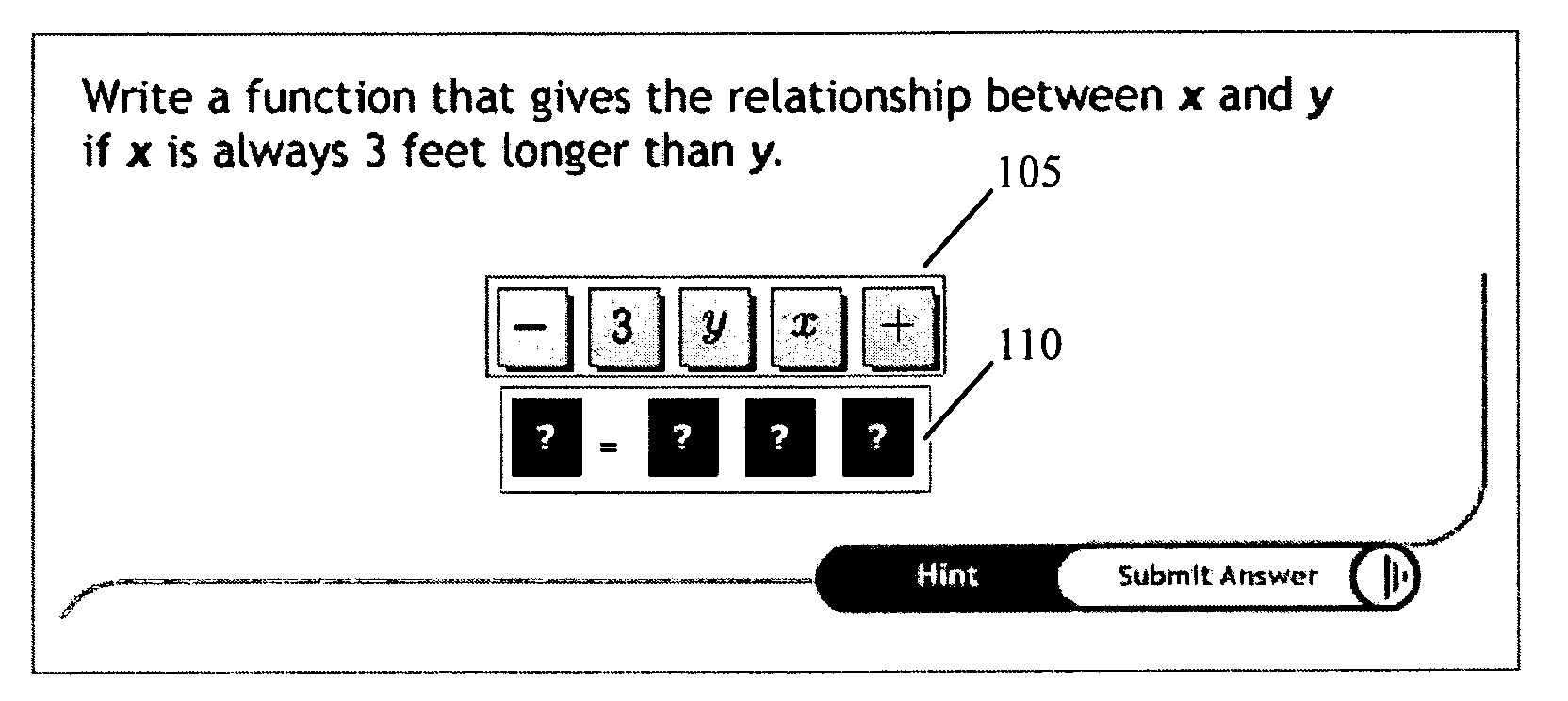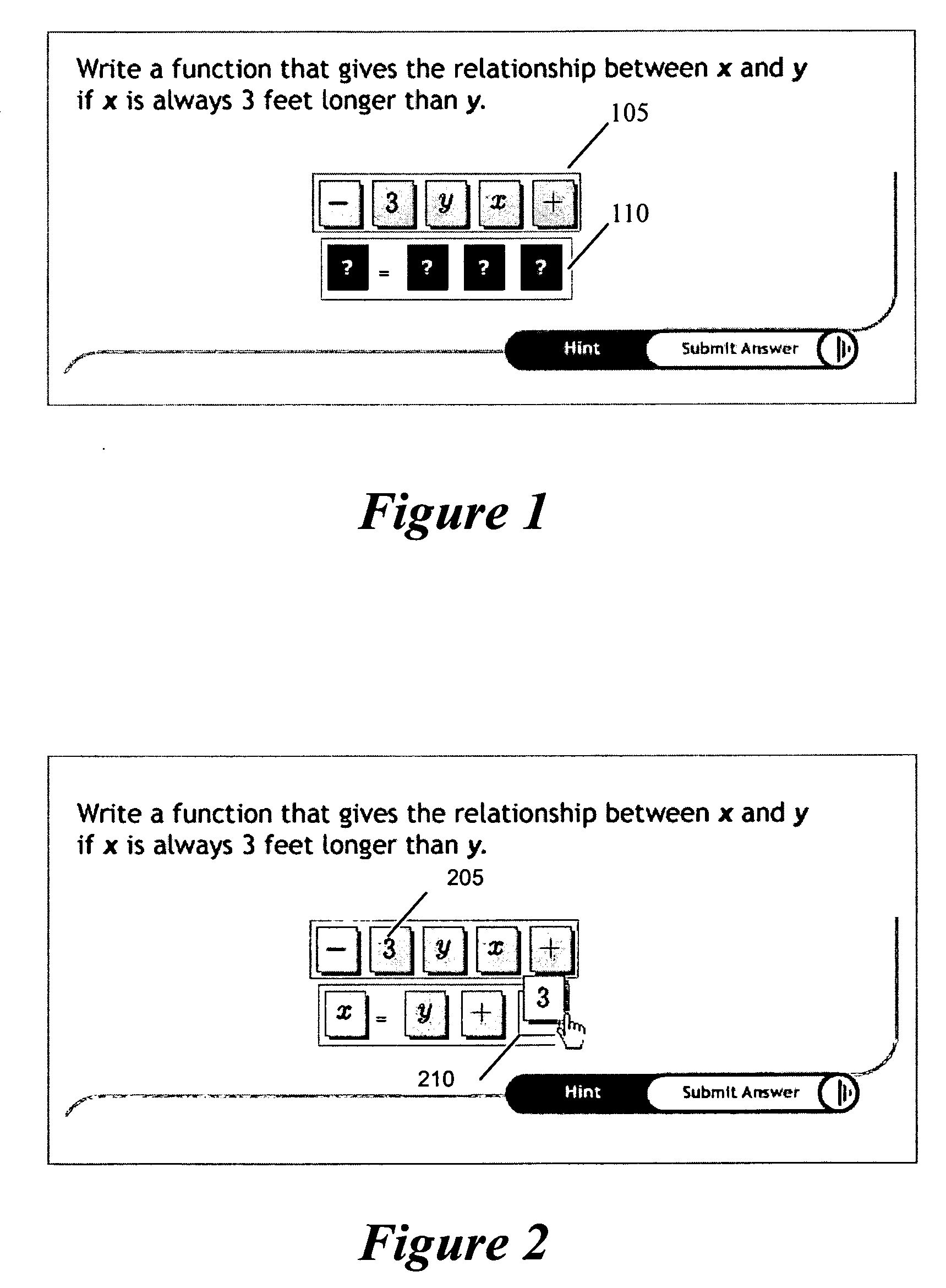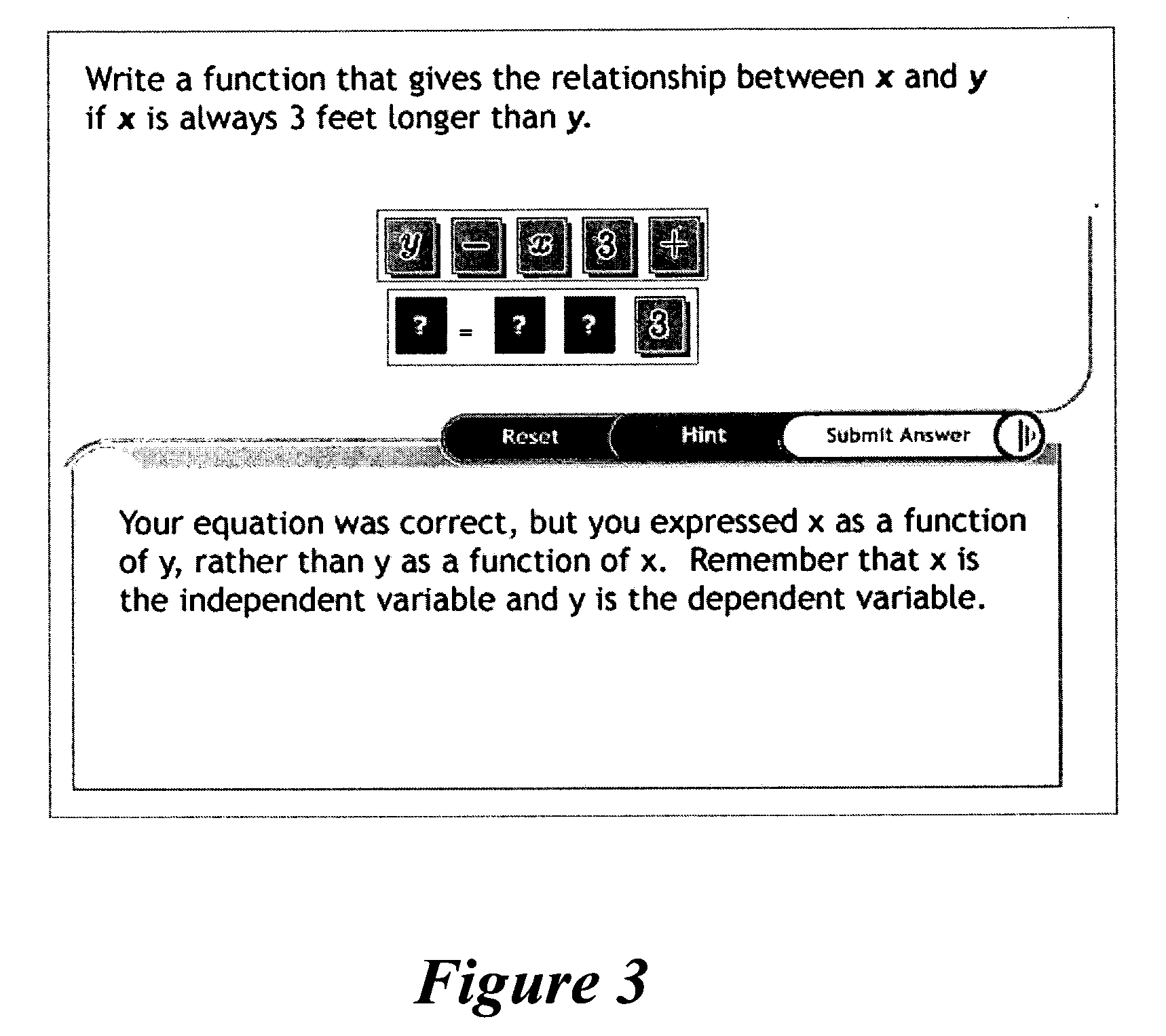Analysis for Assessing Test Taker Responses to Puzzle-Like Questions
a technology of puzzle-like questions and analysis, applied in the field of analysis of test taker responses, to achieve the effect of less guessing, better evaluation basis, and greater challeng
- Summary
- Abstract
- Description
- Claims
- Application Information
AI Technical Summary
Benefits of technology
Problems solved by technology
Method used
Image
Examples
example 1
MCMA
[0078]FIGS. 11-12 illustrate an MCMA example that is described in order to elaborate on how some embodiments utilize a rule-based XML technique to represent a question. FIG. 11 illustrates an initial presentation of an MCMA question. This question asks a test taker to select each true statement in a group of statements. FIG. 12 then illustrates the presentation of the MCMA question after the test taker has provided a response that matches the correct answer.
[0079]The XML for this problem, which uses LaTeX to define mathematical expressions, is shown in Table 1 below. Note that the tag should be interpreted as a slot plus labeling information.
TABLE 1(1)Mark the statements about the truck pattern that are true.The 5th term in the pattern will have 20 squares.The ordered pairs that can be determined from the table are: (1,5), (2,8),(3,11 ).With 15 squares, we cannot make any truck above the 4th term in thepattern.To find the total number of squares in the 6th truck, we can substit...
example 2
DND
[0082]FIG. 13 illustrates a DND example that will now be described in order to further elaborate on how some embodiments utilize a rule-based XML technique to represent a question. This example is a simple Algebra problem but it can have a complex set of responses. This example thus demonstrates the complexity in responses that can be handled with a simple set of rules.
[0083]The XML for this problem, which uses LaTeX to define mathematical expressions, is shown in the Table 2 below.
TABLE 2(1)The equation 18,869 + 6651 ( \ln t) = 25,144 + 2913 (\ln t) could be used to determine theyear in which states A and B would pay the same amount. Drag thetiles to show the first step in solving this equation. (2)(3)18,8696651 (\ln t)25,1442913 (\ln t) + − \bullet \div
[0084]In Table 2, section (1) declares a new page and its initial paragraph text, and section (2) starts the definition of the DND, which defines layout information, here that the palette of tiles should be placed at the top an...
example 3
FIB
[0090]FIGS. 15-16 illustrate a FIB question, where, in this case, sets of rules for both correct and partially incorrect responses are identified. FIG. 15 illustrates an initial presentation of a FIB question, whereas FIG. 16 illustrates the presentation of the FIB question after the test taker has filled in the blanks and submitted the response.
[0091]Table 6 provides the XML for this problem, which uses LaTeX to define mathematical expressions.
TABLE 6(1)(2)123581191218(3)Truck NumberProcess columnTotal squares in the truck13() + 223() + 233() + 2(4) You have correctly formed the patterns that maintains theconstant number of blocks at the top of each truck, while using themultiplication of 3 blocks per row as the trucks get bigger feedback>(5)It is possible that you are adding before multiplying.Notice that the parentheses indicate multiplication which takes placebefore the addition.(6)Look at the pattern of blocks for each truck. See what isthe same and what differs.
[0092]The pr...
PUM
 Login to View More
Login to View More Abstract
Description
Claims
Application Information
 Login to View More
Login to View More - R&D
- Intellectual Property
- Life Sciences
- Materials
- Tech Scout
- Unparalleled Data Quality
- Higher Quality Content
- 60% Fewer Hallucinations
Browse by: Latest US Patents, China's latest patents, Technical Efficacy Thesaurus, Application Domain, Technology Topic, Popular Technical Reports.
© 2025 PatSnap. All rights reserved.Legal|Privacy policy|Modern Slavery Act Transparency Statement|Sitemap|About US| Contact US: help@patsnap.com



